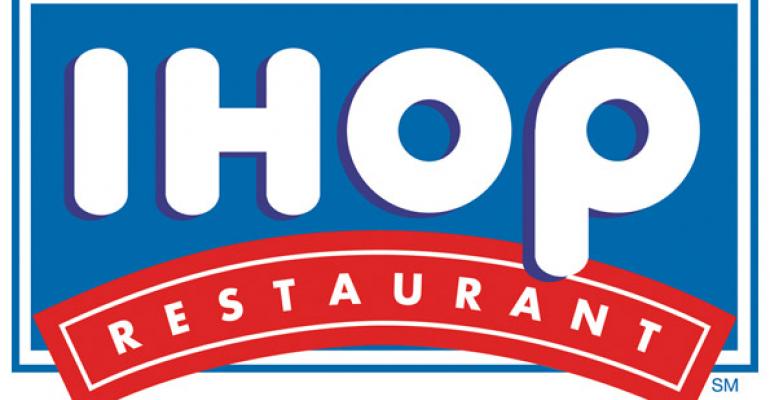IHOP recorded its largest same-store sales increase during the third quarter in more than five years as the result of a menu redesign that has guests buying more appetizers and higher-priced dishes.
For the Sept. 30-ended third quarter, same-store sales for the once-struggling family-dining chain rose 3.6 percent, the largest increase since the 3.7-percent climb recorded during the first quarter of 2008. This also marked the second consecutive quarter of same-store sales increases after a long period of negative results for IHOP.
In a call with analysts on Tuesday, Julia Stewart, chair and chief executive of IHOP parent DineEquity Inc., said the chain’s same-store sales improvement was largely a result of a higher average check, which offset a decline in traffic.
In recent months, the company has been working on improving IHOP’s menu, making tweaks to operations and advertising, as well as attempting to improve the brand’s overall value proposition. The primary driver of the improved results for the third quarter, however, was a menu redesign, which prompted guests to trade up, in some cases buying items that had been on the menu for 15 years but had previously gone unnoticed.
“We have developed a menu that sells and is easier to navigate,” said Stewart. “Consumers just loved it.”
Turning around traffic trends remains a challenge for DineEquity in what Stewart calls the ongoing “lumpy and bumpy” macroeconomic climate.
IHOP’s sister brand, Applebee’s Neighborhood Grill & Bar, also saw traffic decline for the quarter with same-store sales falling 0.4 percent despite increases to average check — though Stewart noted the chain still outperformed its casual-dining peers according to Knapp-Track data.
“We’re doing all the right things but it does take time,” she said, noting that IHOP’s traffic rose somewhat during the second quarter. “So we know we can get there, and we’ll get there again.”
During the quarter, IHOP also opened its first airport location at Hartsfield-Jackson Atlanta International Airport. The unit is accessible to the public and employees without having to go through security, which offers an opportunity for more traffic, said Stewart.
Airports and college campuses remain a focus for nontraditional growth, she said.
Expecting IHOP’s trends to remain strong for the fourth quarter, DineEquity revised its projections for the year, saying same-store sales growth will be between 2 percent to 3 percent at the chain. Previously, the company had expected same-store sales would be between negative 1.5 percent to positive 1.5 percent for the year.
At sister brand Applebee’s, however, the company narrowed its projections for the year, saying same-store sales will likely be between negative 0.5 percent to positive 0.5 percent, compared with previous expectations of between negative 1.5 percent and positive 1.5 percent.
The company also revised its expectations for new Applebee’s openings in 2013, saying franchisees will open between 25 and 30 new restaurants this year, as opposed to the 40 to 50 new restaurants expected earlier.
DineEquity completed its plan last year of shifting to an asset-light, almost-all franchise model for Applebee’s, as was the intention when the casual-dining chain was acquired in 2007. After selling 479 domestic company-operated locations to franchisees over the past four years, the 2,009-unit chain now includes only 23 company-owned test locations in its home market of Kansas City.
Still, new growth has been stagnant. DineEquity ended fiscal 2012 with 2,017 Applebee’s restaurants and ended fiscal 2011 with 2,010 units.
Franchisees have been devoting their capital to remodels, and 66-percent of the chain now has the new updated design. By the end of 2014, the remodel program will be complete, Stewart said.
In addition, the consolidation of franchise operators has delayed development agreements in the works, as the company grants extensions as part of such transactions, she added. “We’re certainly not satisfied with the pace of development this year,” said Stewart. “We underestimated the time it would take to rebuild the development pipeline.”
Meanwhile, the company is continuing to experiment with a fast-casual format at lunch, as well as tabletop ordering devices.
“There is no doubt we are in a period of evolution and change,” said Stewart. “We will continue to focus on what we can do to differentiate both brands.
Contact Lisa Jennings at [email protected].
Follow her on Twitter: @livetodineout

